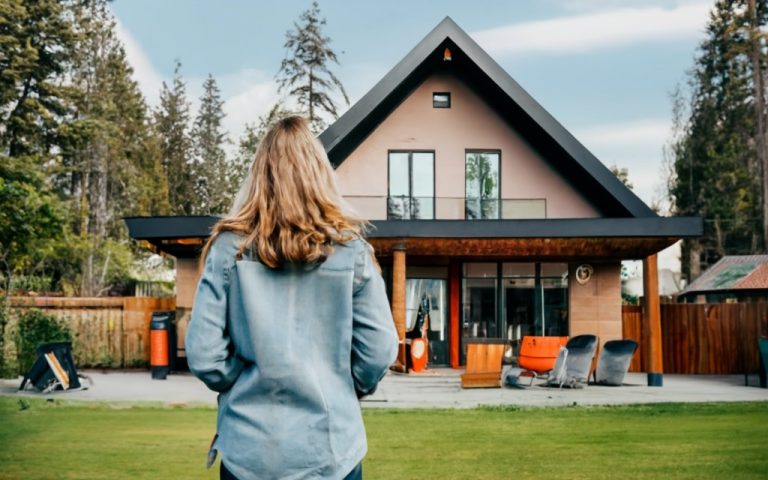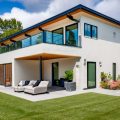As the population continues to age, the desire for seniors to maintain their independence and age in place grows stronger. One solution that has gained popularity in recent years is the creation of Accessory Dwelling Units (ADUs). These compact, self-contained living spaces on the same property as the main home have proven to offer numerous benefits to seniors looking for comfortable, affordable, and independent living arrangements.
In this article, we’ll explore the many advantages of having an ADU for seniors, shedding light on why this housing option has become increasingly popular.
Aging in Place
Aging in place is a concept many seniors embrace. It entails staying in their own homes and communities as they grow older. The familiarity of their surroundings, connection with neighbors, and emotional ties to their homes make it an attractive prospect. However, aging in place comes with challenges such as mobility issues and the need for assistance. This is where ADUs can play a pivotal role, ensuring seniors can continue to enjoy the comfort of their own homes.
Financial Benefits
One of the most compelling advantages of ADUs for seniors is the financial benefits they offer. These include:
- Cost-effectiveness: ADUs can be a cost-effective way to create independent living spaces without the substantial costs associated with assisted living facilities or nursing homes.
- Rental Income: Many seniors find that renting out their ADU generates additional income, making it an appealing financial choice.
- Property Value Increase: The presence of an ADU can enhance the overall property value, potentially benefitting seniors who plan to sell their homes in the future.
- Funding Options: Various funding options and programs exist to assist seniors in financing ADU construction.
Enhanced Independence
Seniors value their independence, and ADUs offer just that. These compact dwellings allow for:
- Privacy and Autonomy: With a separate living space, seniors maintain their privacy and autonomy while still being close to family.
- Accessibility and Safety Features: ADUs can be designed with accessibility in mind, featuring ramps, wider doorways, and safety modifications tailored to seniors’ needs.
- Emotional Well-being: The emotional well-being of seniors can greatly improve when they have their own space, reducing the risk of depression or loneliness.
Multigenerational Living
ADUs are an excellent solution for multigenerational living, bringing family members closer. They can:
- Facilitate Multi-Generational Households: Seniors can live in the main house, while their adult children or grandchildren occupy the ADU. This arrangement fosters strong family bonds.
- Sharing Caregiving Responsibilities: The proximity of the ADU enables family members to share caregiving responsibilities, ensuring seniors are well taken care of.
Social and Community Benefits
Beyond personal advantages, ADUs have social and community benefits:
- Social Interaction Opportunities: Living near family members promotes social interaction and emotional support.
- Contribution to the Housing Crisis: ADUs address the housing crisis by increasing available housing units without the need for extensive new construction.
- Benefits for Local Communities: ADUs strengthen local communities, fostering a sense of unity and shared responsibility.
Legal and Zoning Considerations
Before constructing an ADU, it’s essential to understand legal and zoning considerations:
- Understanding Local Zoning Laws: Different areas have varying zoning laws that affect ADU construction. It’s crucial to understand and adhere to these regulations.
- Navigating Legal Requirements: Compliance with building codes, permits, and regulations is necessary for a smooth ADU construction process.
Design Considerations
Design considerations are key when planning an ADU for seniors:
- Creating an Age-Friendly ADU: Design should prioritize accessibility and comfort for seniors.
- Universal Design Principles: Incorporate universal design principles that make living spaces safe and usable for people of all ages and abilities.
- Safety Features and Accessibility: Features like non-slip flooring, grab bars, and step-free entrances are vital for the well-being of seniors.
Case Studies and Real-Life Examples
Let’s look at some case studies and real-life examples of how ADUs have positively impacted the lives of seniors:
- Mary’s Story: Mary, an 80-year-old, transformed her backyard garage into a cozy ADU, allowing her to stay close to her family and enjoy her independence.
- The Smith Family: The Smiths converted their basement into an ADU, providing a comfortable and affordable home for their adult daughter and a valuable source of rental income for their retirement.
Resources and Support
For seniors interested in ADUs, there are resources and support available:
- Organizations and Agencies: Various organizations and agencies can assist in navigating the process of building an ADU.
- Financial Resources and Grants: Explore financial resources, grants, and programs that can help fund ADU construction.
- Expert Advice and Consultations: Seek advice from professionals specializing in ADU design and construction.
Conclusion
In conclusion, the benefits of having an ADU for seniors are significant. These self-contained living spaces provide the opportunity for aging in place with independence, financial security, and increased quality of life. The multifaceted advantages, including financial stability, enhanced independence, and social connection, make ADUs a valuable housing solution for seniors in our aging society.







